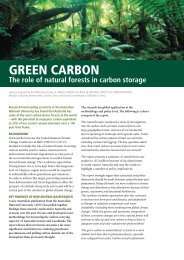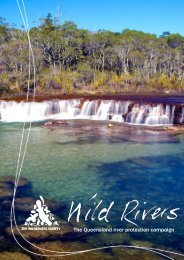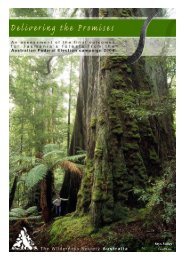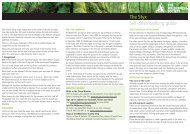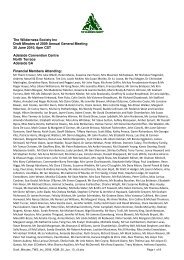Untitled
Untitled
Untitled
- No tags were found...
Create successful ePaper yourself
Turn your PDF publications into a flip-book with our unique Google optimized e-Paper software.
3.0 Rating the conditions of 7 February3.1 OverviewThe conditions of 7 February 2009 set new records for extremes in temperature and relativehumidity (Karoly 2009). When combined with long-term rainfall deficits and droughtconditions they created unique conditions for fire. Wildfire behaviour academics andresearchers have developed methods for measuring fire danger, through the Fire DangerIndex (FDI). This system rates the fire danger for a particular day, based on its temperature,relative humidity, wind velocity and the long-term drought conditions, often referred to asdrought factor. The following section provides a background to this system.3.2 Fire Danger IndexThe Fire Danger Index system is used throughout eastern Australia. It was initially developedas the McArthur Fire Danger Rating System. It provides a means of estimating firebehaviour and the rate of spread in most of the common fuel types in eastern Australia(Luke and McArthur 1978).Luke and McArthur (1978) say the Fire Danger Rating System consists of two meters: theforest fire danger meter and the grass fire danger meter. They integrate the combinedeffects of fuel moisture content and wind velocity to form a basic fire danger index. Eachbasic index can be related to fuel quantity and slope to give the head fire spread ratesand other fire behaviour characteristics.Luke and McArthur (1978) express the forest and grassland indices to the rate of forwardspread on a scale of 1 to 100. They state that an index of 100 represented the near worstpossible fire weather conditions that could be experienced in Australia. They claim anindex of 1 would be virtually self-extinguishing, while an index of 100 (or greater) would burnso rapidly and intensively that control of these fires would be virtually impossible. Luke andMcArthur (1978) divide the FDI rating into five categories:• Low• Moderate• High• Very high• ExtremeThe FDI takes account of long and short term drying. Luke and McArthur (1978) make useof a modified version of the Keetch-Byram drought index (KBDI). They take the short termrainfall to be based on the changes expected in the moisture content of surface litter,specifically in material less than 6mm in diameter. Wind speed is expressed in what Lukeand McArthur (1978) refer to as “open station wind speed”. The rate of spread and otherfire behaviour characteristics given by the forest fire danger meter are based on typicalsingle fires burning under commercial eucalypt forests. Luke and McArthur (1978) advisethat the index should not be used to predict the behaviour of multiple fires burning in closeproximity.10






